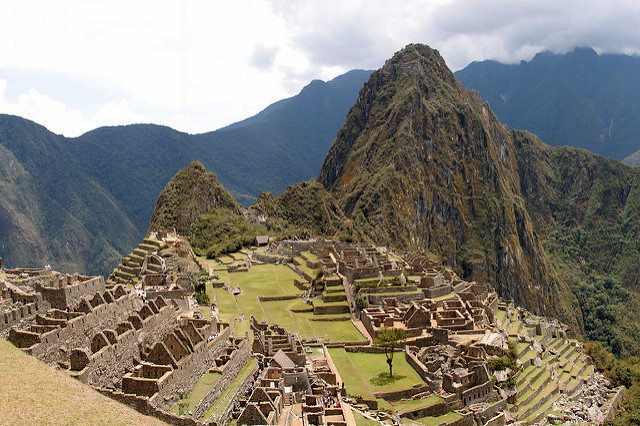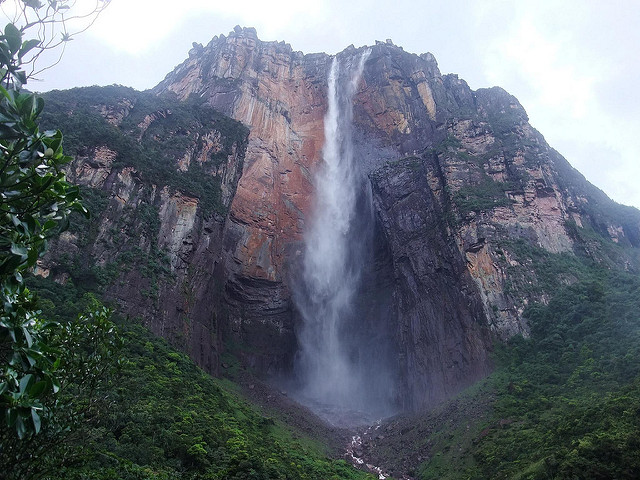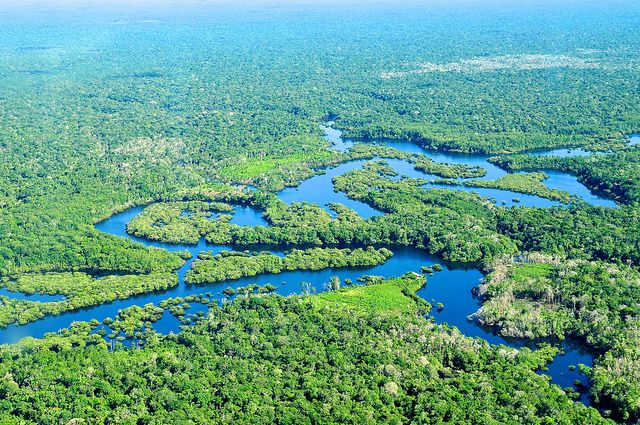Landmarks can be natural wonders, structures made by humans or just popular tourist sites that travelers like to visit. South America is one of the most flamboyant, passionate and culturally diverse continents in the world, from the Brazilian carnival to the remote locations that trail along the banks of the Amazon. South America has a history that has a wide range of human cultures and forms of civilization. The Norte Chico civilization in Peru is the oldest civilization in the Americas and one of the first six independent civilizations in the world; it was contemporaneous with the Egyptian pyramids. It predated the Mesoamerican Olmec by nearly two millennia. While millennia of independent development were interrupted by the Portuguese and Spanish colonization of the late 15th century and the demographic collapse that followed, the continent’s mestizo and indigenous cultures remain quite distinct from those of their colonizers. Through the trans-Atlantic slave trade, South America (especially Brazil) became the home of millions of people of the African diaspora. The mixing of races led to new social structures.

Image courtesy of dgphilli at Flickr.com
Here we present a number of fascinating natural and man-made wonders, each of which has its own unique narrative and stunning history:
Lençóis Maranhenses National Park
Located in northeastern Brazil, the Lençóis Maranhenses National Park is a low, flat and occasionally flooded land, filled with large sand dunes. Despite large amounts of rainfall, it has almost no vegetation. The rains cause an amazing phenomenon where fresh water collects in the valleys between the dunes, spotting the desert with blue and green lagoons. The rains cause a peculiar phenomenon: fresh water collects in the valleys between sand dunes and is prevented from percolating down by a layer of impermeable rock which lies underneath the sand. The resulting blue, green and black “lagoons” are surrounded by the desert-like sand, and reach their fullest between July and September.
Located on the northeastern coast of the state of Maranhão by the banks of the Preguiças River, the park embraces the municipalities of Humberto de Campos, Primeira Cruz, Santo Amaro do Maranhão and Barreirinhas, the latest serving as the main jumping off point into the protected park. The National Park is quite extensive and has no direct access roads. Because of the nature of the park’s protected status, most vehicles are not permitted access. Entrance to the park is made exclusively by 4-wheel drive trucks.
Angel Falls

Image courtesy of Andrew White at Flickr.com
It is the world’s highest uninterrupted waterfall, with a height of 3,212 ft and a plunge of 807 2,648 ft. The waterfall drops over the edge of the Auyantepui Mountain in the Canaima National Park, a UNESCO World Heritage site in the Gran Sabana region of Bolívar State in Venezuela. The falls are on the Orinoco River, which flows into the Churun River, a tributary of the Carrao River.
Angel Falls is one of Venezuela’s top tourist attractions, though a trip to the falls is a complicated affair. The falls are located in an isolated jungle. A flight from Puerto Ordaz or Ciudad Bolívar is required to reach Canaima camp, the starting point for river trips to the base of the falls. River trips generally take place from June to December, when the rivers are deep enough for use by the Pemon guides. During the dry season (December to March) there is less water seen than in the other months.
Galapagos Islands
The Galapagos Islands are an archipelago of volcanic islands in the Pacific Ocean, 926 km west of Ecuador. The Galapagos Islands and their surrounding waters are a national park and a biological marine reserve. The islands are world famous for their vast number of endemic species and were studied by Charles Darwin. Darwin’s observations helped to form his theory of evolution by natural selection.
Amazon Rainforest

Image courtesy of CIFOR at Flickr.com
Also known in English as Amazonia or the Amazon Jungle, is a moist broadleaf forest that covers most of the Amazon basin of South America. This basin encompasses 7,000,000 square kilometers of which 5,500,000 square kilometers are covered by the rainforest. This region includes territory belonging to nine nations. The majority of the forest is contained within Brazil, with 60% of the rainforest, followed by Peru with 13%, Colombia with 10%, and with minor amounts in Venezuela, Ecuador, Bolivia, Guyana, Suriname and French Guiana. States or departments in four nations contain “Amazonas” in their names. The Amazon represents over half of the planet’s remaining rainforests, and comprises the largest and most biodiverse tract of tropical rainforest in the world, with an estimated 390 billion individual trees divided into 16,000 species.
The quickest and easiest way into the Brazilian Amazon is by air into the city of Manaus, which has an international airport served by many airlines. In Manaus, there are many tour operators who offer day boat trips to ecological attractions in the surrounding jungle, like the Encontro das Aguas, where the black waters of the Rio Negro meet the white waters of the Rio Solimoes, and extended excursions both up and down the river.

